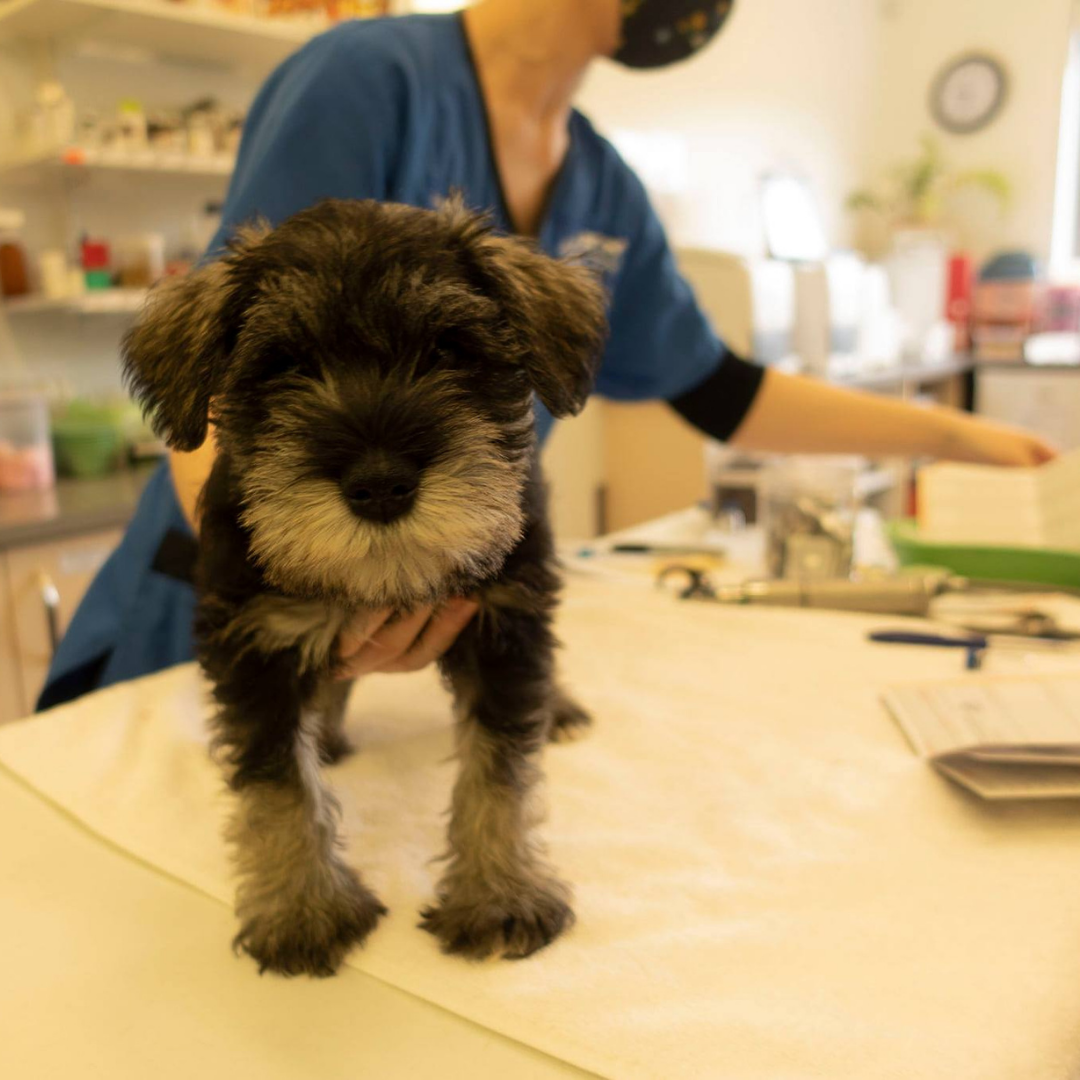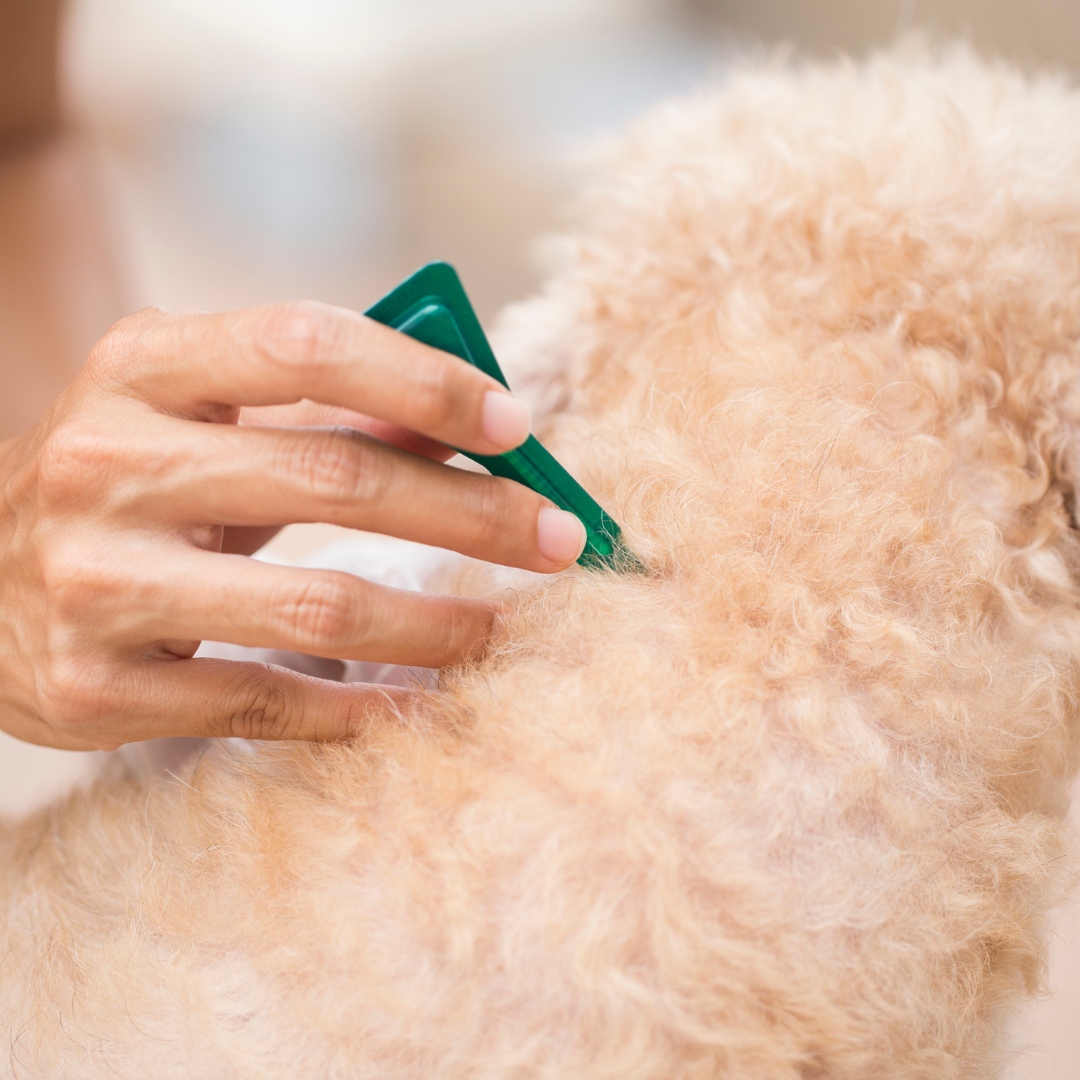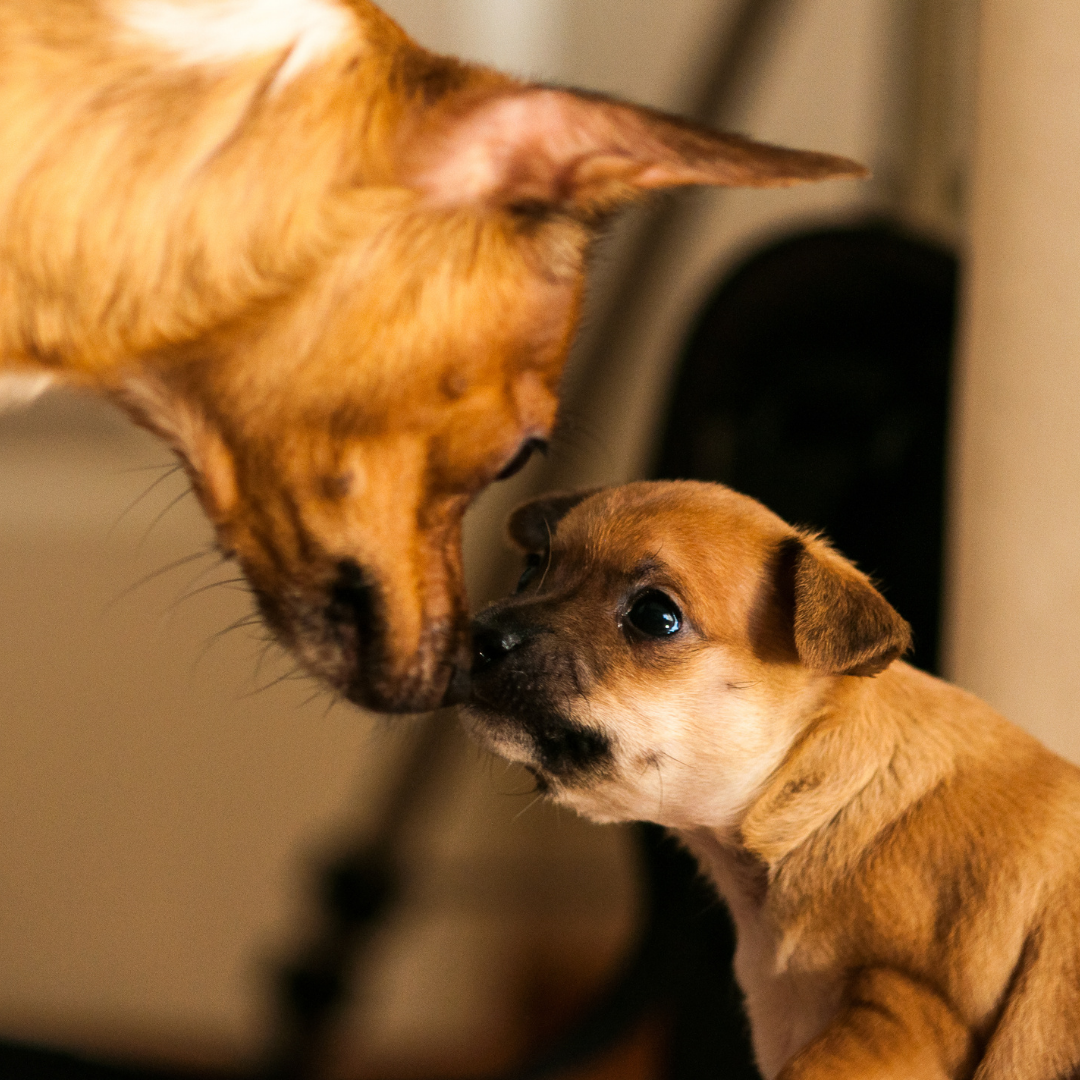Puppies as Christmas Gifts - all you need to know!
Adding a puppy to the family as a Christmas gift can be an awesome surprise present. Your puppy will love you forever, so make sure you return the favour and become a responsible and educated pet owner.
Below is a lot of information to take in, so spend some time with the family, enjoy your puppy and let them become a happy, healthy member of your family that you are proud of.
INTERESTING NEW BORN FACTS:
During the first week of a dog’s life, 90% of their time is spent sleeping, and 10% is spent eating, they are born blind, without teeth or the ability to hear.
Their eyes open at around 10 to 14 days old, and their hearing will start after this. Their teeth start coming through at 6 weeks.
Most breeds of puppies are considered adults when they are one year old.
Worming
All puppies should be wormed with a good quality broadspectrum wormer from 2 weeks of age. We recommend worming every 2 weeks until your puppy is 12 weeks (3 months old) and then worm monthly until 6 months of age. From here, if you have very young children in the family, we recommend you continue worming monthly or transition to worming every 3 months thereafter for all other families.
Flea Treatment
All puppies should be covered by an appropriate flea product throughout their lives as part of a preventative flea program. It is far healthier and easier to prevent flea issues rather than treat them once they have been seen.
Exercise
As a general rule of thumb, ‘formal’ exercise (on a leash) should be limited to 5 minutes for every month of the puppy’s life, e.g., a 3 month old puppy should not be exercised for more than 15 minutes, twice a day.
This rule applies until the puppy is 6 months old, but for large breeds caution should be taken not to over exercise the puppy until it has reached full maturity.
Vaccinations
Puppy vaccinations are usually started between 6-8 weeks of age and given every 3-4 weeks until the puppies are at least 16 weeks of age. Vaccinations are then usually given yearly for on-going protection and cover against the following diseases:
Canine distemper
Adenovirus
Parainfluenza
Parvovirus
Bordetella
Environmental Enrichment
If puppies become bored in their environment they may chew and destroy items, dig or bark constantly. By enriching a puppy's environment owners can provide enough physical exercise and mental stimulation to relieve boredom and the associated anti-social behaviours.
Enrich your puppies environment by:
Providing chew and play toys.
Provide activities to keep them entertained e.g. shallow pool filled with water.
Exercise your pup mentally or physically before going out for long periods of time.
Puppy Exposure
It is important to ‘expose’ your pet as a puppy, to many of the things it will encounter in his/her everyday life with you as soon as possible. This includes, but is not limited to;
Other animals in your household/lifestyle block/farm
Other family members - especially young children
Household appliances (vacuum cleaner, washing machine etc), lawnmower
Travelling in the car.
-
For example, if the puppy displays fearful behaviour in reaction to the vacuum cleaner and you ‘reassure’ the puppy, telling him/her “it’s okay” and generally making a fuss of him/her, the puppy then learns that this is how you would like him to react each time he encounters this situation. Ignoring the undesirable (fearful) behaviour is the correct way to react, however if the puppy becomes unduly distressed, quietly remove him/her from the situation and try again later.
Desexing
By desexing your pet, many unwanted litters are prevented. It is a one-off procedure that usually only requires a day stay in hospital.
Desexed males will not get testicular cancer, are far less likely to have behavioural issues and have a reduced incidence of prostate disease compared to their entire counterparts.
Desexed females will not get diseases of the ovaries or uterus and if done early enough will reduce their risks of developing breast cancer. The only true disadvantage of surgical desexing, is that you will not be able to breed from your pet.
-
What is the best age to neuter my dog (Castration or Spay)?
Small to Medium breed dogs <20-25kg predicted adult body weight These can be desexed from 6 months of age Large to Giant breed dogs >25kg predicted adult body weight
-
Females it is recommended for large mixed breeds, (over 25kg adult weight) after 12 months old, when most of their growing phase has completed to minimise the risk of orthopaedic issues later in life. If you have a pure-breed dog, your veterinarian will discuss any important breed predispositions and susceptibilities (e.g. orthopaedic diseases, or certain types of cancers) which should be considered before desexing.
-
Males it is recommended for large mixed breeds, (over 25kg adult weight) to castrate them once they have reached skeletal maturity after 12 months of age to minimise the risk of orthopaedic diseases (Giant sized mixed breed dogs after 12-24 months old). However if you are having any concerns over your male dog's behaviour this can be brought forward.
If you have a pure-breed dog, your veterinarian will discuss any important breed predispositions and susceptibilities (e.g. orthopaedic diseases, or certain types of cancers) which should be considered before desexing.
-
Small breeds, male and female can be desexed from 6 months old. We advise you speak with your vet regarding the best time for your breed.
Puppy Training
Training your puppy lasts forever, make it part of your daily routine from day one, and remember practice makes perfect, any progress is good progress, BE PATIENT!
-
Get your puppy’s full attention by saying his/her name and ensure their focus is on you. Hold a treat at nose level then slowly move the treat backwards over the forehead, encouraging the puppy to follow the treat with their nose. Be sure to give the command “sit” repeatedly while performing this exercise until your puppy fully understands the command. As soon as the puppy sits, give the treat and praise. Avoid pushing your puppy into a sitting position.
-
Always use your puppy's name before giving the command. That way you will have his attention.
Train your pup by positive reinforcement. Initially always reward him with a food treat until you know that he understands what he is expected to do. Then only give the treat randomly, but ALWAYS give him lots of PRAISE when he does the right thing.
Train your pup at different times and in different places so that he doesn't become a dog who is only obedient in the kitchen at dinner time.
-
Stand with your puppy at your side and give the “stay” command and hand signal. Initially do not move at all but reward your puppy for staying still after a few seconds. When you feel your puppy is starting to understand this command, give the “stay” command and take one step away from him/her, then step back and give praise and a reward. Gradually increase the distance and time away from your puppy.
Always use a ‘release’ command (such as OK, Finish, or Free) when you have finished this exercise so your puppy knows it is okay to move away from you.
-
Be vigilant – remember every ‘accident’ is a result of your own inattention
Recognise the signs that your puppy needs to go to the toilet – sniffing the floor, circling, tail posture
Use a ‘toilet’ command when you see your puppy relieving him/herself in the correct place so he/she learns what you want him/her to do
Remember to praise your puppy when he/she toilets in the correct place
Never rub your puppy’s nose in their urine/faeces – this will make your puppy reluctant to relieve themselves in front of you and can lead to behavioural problems such as eating their own faeces
Ensure you clean up any ‘accidents’ with non-ammonia based cleaning products to avoid your puppy returning to the same spot.
-
Have you got his attention? Try clapping your hands or changing the tone of your voice. You don't need to shout, you just need to be more exciting than the distraction.
Is he getting tired? Puppies have very short attention spans.
Does he understand the command or what is expected of him?
Puppy Nutrition
A growing puppy has nearly 3 times the energy requirements of an adult dog and therefore needs a diet especially formulated for puppies.
Puppies do not need cow’s milk to drink, many puppies lose the ability to digest lactose after weaning and develop diarrhoea.
-
Select a diet that is designed for large breeds. Do not overfeed or over exercise large breed dogs, this can lead to bone and joint problems later in life. Exercise little and often no more than 20-30 minutes at a time for the first 18 months of age. No jumping!
-
Supplements such as calcium added to an already balanced diet can be detrimental to your puppie's health. Too much calcium is just as bad as not enough.
A puppy fed solely on meat is not receiving a balanced diet.
A constant variety can create a finicky eater.
Supermarket dog foods are generally vegetable or cereal based. Stomach capacity cannot consume enough canned food to meet nutritional requirements.
-
Premium food brands have been developed through years of clinical research.
If you can not afford to feed a Premium diet for the whole of your dogs life it is best to feed one up to a year old and for large breeds some times up to 18 to 24 months.
Puppy diets promote healthy growth with the correct balance of carbohydrates, fibre, protein and calcium. The premium brands contain chicken, turkey, fish and egg as their protein sources.
Every single ingredient in these products is of nutritional benefit to your puppy. There are no fillers and each diet is formulated to provide everything required based on age and breed.
Many brands at the supermarket include cereal based protein not animal based.
Animal based proteins are found in the natural diet of dogs and are easy to digest.
-
These act as an energy source, promote growth, normal metabolism, shiny coat and improve the foods palatability.
Large breed puppies are more susceptible to developing conditions such as hip and elbow dysplasia (an abnormality in the hip or elbow joint). Large breed diets are designed to promote a steady even bone growth. Feeding the correct diet at this stage is very important.
Walking Nicely On A Leash
As with all your training, be patient and consistent. Ensure your puppy is well used to wearing a collar before attaching the leash.
With the puppy in the SIT position beside you, start walking and hold a treat at the puppy’s nose level to prevent him jumping up.
Give the command ‘Heel’ and keep walking while your puppy walks calmly beside you. Do not keep repeating the ‘Heel’ command continually, however, when he/she is succeeding, reward the correct behaviour by giving a treat and praise including the command, e.g. “Good girl, Heel”.
As soon as the puppy pulls on the lead, STOP – the puppy will soon learn that if he/she doesn’t pull on the lead, he/she will get to go for a walk.
Pet Insurance
Pet insurance is strongly recommended for all pets to help with any future medical or surgical problems encountered throughout their lives. There are many companies offering pet insurance and we recommend that you investigate all of the options available. Pet Cover insurance company offer 4 weeks free insurance once your puppy has been checked by a vet and will give you the time to investigate all the options, whilst keeping your puppy covered. There is a 3 day stand down for injury/accident and a 7 day stand down for illness. An excess will also apply but this insurance can be a lifesaver.
Microchipping
Microchipping is compulsory by law for all pet dogs registered in NZ. Pet shelters, such as the SPCA, and all vet clinics routinely check stray animals for a microchip when they arrive, and if a chip is found, they will contact you so you can be reunited with your pet.
The New Zealand Companion Animal Register is where your information will be stored, this can be accessed by vets and animal shelters at all times and should be kept up to date with any changes of your contact details.
Travelling With Your Puppy
Start by taking small trips in the car if possible. Increase the travelling time gradually until your puppy is completely comfortable with being in the car and always ensure that it is a positive experience for him/her. Consider using a seatbelt especially designed for dogs – unrestrained dogs can become dangerous in a car accident, and a seatbelt may also save his/her life.
Please ask if you have any questions.













